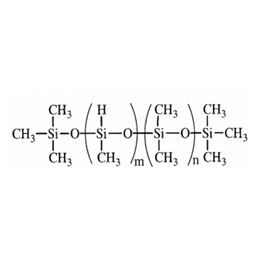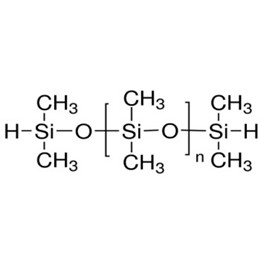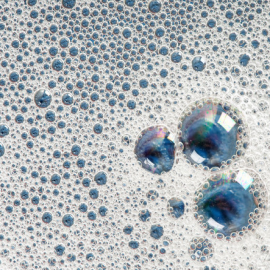Liquid silicone rubber is relative to solid high-temperature vulcanized silicone rubber, which is a liquid rubber with good fluidity, fast vulcanization, safer and more environmentally friendly, and can fully meet the requirements of food grade. Liquid silicone rubber has excellent tear resistance, resilience, anti-yellowing, thermal stability and heat resistance, and anti-aging, is also a conventional insulating material. It is mainly used in baby products, medical supplies, and electronic products (buttons). So what are the methods of liquid silicone molding?
The performance of liquid silicone products has excellent transparency, a strong degree of tearing resistance, resilience, anti-yellowing, thermal stability, heat aging resistance, and weather resistance, as well as moderate viscosity, good fluidity, ease of operation, and high transparency of the products.
There are different methods of liquid silicone molding which can be used in different fields. The liquid silicone injection molding method is to pump the addition of curing type of liquid silicone rubber into the injection molding, curing, and molding method in the model; this molding method is the most simple one, the process is to put the pre-prepared silicone rubber material into the mold cavity installed in the vulcanization molding machine, the mold also needs to be based on the material to set up the appropriate mold temperature, and then hot press molding after a period of time of vulcanization to get our desired products. After a period of vulcanization to get the products we need.
Here’s some information about it:
- What is liquid silicone?
- How to classify liquid silicone molding methods?
- What is the molding process of liquid silicone products?
- How to apply liquid silicone?
- How to choose the raw material of liquid silicone?
- How to make liquid silicone rubber?
1. What is liquid silicone?
Liquid silicone is a high-performance material with excellent heat resistance, cold resistance, ozone resistance, UV resistance, electrical insulation properties, and other advantages. Therefore, in industrial production and daily life, liquid silicone is widely used in mold manufacturing, electronic component encapsulation, food processing, medical equipment, furniture manufacturing, and other fields.
![]()
2. How to classify liquid silicone molding methods?
There are many kinds of liquid silicone rubber molding methods, the common LSR molding process methods are compression molding, injection molding, and assembly line process.
2.1 Compression molding
Compression molding is a commonly used molding method for liquid silicone manufacturing molds it is suitable for making molds with high molding precision and complex details, such as patterns and designs on the surface of the mold. This method requires the mold surface to be smooth, have no oil, and be coated with a mold separator after processing.
The specific operation process is as follows.
(1) First, select suitable molds and apply a separator.
(2) Secondly, mix the liquid silicone A and B components.
(3) Thirdly, inject the mixed liquid silica gel into the mold, apply pressure through the molding machine, and the whole molding process is completed at room temperature.
(4) At the end, after the molding is completed, take out the finished product from the mold for the next step of post-processing.
![]()
2.2 Injection molding
Compared with solid silicone, liquid silicone rubber has fluidity, is colorless and tasteless, safe and environmentally friendly.
Liquid injection molding process: liquid silicone (Liquid silicone rubber) is into A, and B two components, the use of quantitative devices are to control the two for a ratio of 1:1, and then through the static mixer to full mixing fully injected into the barrel of the liquid silicone injection molding machine and then accurately injected into the heated mold inside the molding. In the injection molding process, we need to use a mold clamp.
Silicone rubber liquid injection molding is a molding method in which liquid silicone is injected into the injection molding machine and formed as a molded object under high temperature and high-pressure conditions. The liquid injection molding method is suitable for the production of silicone products with high precision and standardized dimensions and is widely used in the fields of medical devices and automotive parts. The liquid silicone injection molding process is very simple: LSR injection molding does not need the solid silicone process of batching, refining, cutting, set up, and other manual requirements, needs to manually take the product or even the whole process of fully automated production, with no human intervention. With high product precision, high yield, labor savings, material savings, electricity savings, and many other advantages, can produce all high-temperature solid silicone production products.
As people's environmental requirements are getting higher and higher, the liquid silicone injection molding process will be more widely used, mainly because of environmental protection, the production process will not produce harmful substances. And human contact safety. In recent years, the liquid silicone injection molding method because of the advantages of short-time automatic molding and plastic composite molding, has become the industry people and soil common concern and use of molding methods.
![]()
The specific operation process is as follows.
(1) First, select the appropriate amount of liquid silica gel A, and B components, and mixing
(2) Secondly, preheat the cylinder to a suitable temperature, and inject the mixed liquid silica gel into the cylinder.
(3)Thirdly, use the injection molding machine for heating and injection operation, the machine will heat liquid silicone injected into the mold, forming products.
(4)At the end, the finished product is cooled and unloaded from the mold for the next step of post-processing.
2.3 Assembly line process
The assembly line process is to continuously inject liquid silicone into the mold, through high-temperature curing, extrusion, and cutting, fast and efficient production of products. This molding method is widely used in food processing, medical devices, and other fields.
The specific operation process is as follows.
(1) First, design and manufacture of suitable molds
(2) Secondly, determine the production process of the assembly line, the development of the production process control program
(3) Thirdly, setting up different stations on the assembly line, coherently connecting the stations, and automating and monitoring the molding process.
(4) At the end, mix liquid silicone A, and B components, according to the production needs of continuous injection mold, heating, cooling, cutting, and other operations, in the production line to form qualified silicone products.
Liquid silicone's different molding methods have their characteristics, the specific application needs to be combined with production needs, technical requirements, cost control, and other factors to choose from. In actual production, you can choose according to the size of the mold, shape, quantity, and other factors to improve production efficiency and quality of the finished product.
![]()
3. What is the molding process of liquid silicone products?
Liquid silicone is the main raw material for processing products with excellent performance, so it is widely used in aerospace, electrical and electronic, automotive, machinery, construction, medical, and other fields.
3.1 Mixing rubber material
Liquid silicone rubber is divided into A glue and B glue, and quantitative devices to control the two for a ratio of 1:1, then through the static mixer (Static Mixer) to be fully mixed, because some of the silicone products for the color of the design, so it is equipped with color pumps and color metering part of the A + B components, additives, color and so on can be fully mixed. After entering the plasticizing system.
3.2 Injection of rubber
Liquid silicone is injected into the hot runner mold through the screw, and the silicone is cured at a mold temperature of 170-200°C. When using a cold runner system, the silicone is injected into the hot runner mold. When using a cold runner system, it is worth noting that the runners should be cold enough. In order to avoid leakage of glue, the needle valve is mounted on the surface of the mold part, and the needle valve closes the injection nozzle immediately when the injection of glue is finished.
3.3 Molding key:
Due to the low viscosity of liquid silicone, it is necessary to consider the backflow of material and glue leakage during processing, so the sealing of the screw is necessary. To prevent the curing of liquid silicone, a needle valve injection nozzle is to be used.
In the mold design should pay attention to the shortening rate of liquid silicone, parting line, exhaust, injection point, and other factors. Due to the high coefficient of expansion of liquid silicone, expansion occurs when heated, but there is a slight contraction when cooled, so the part cannot maintain precise side distance in the mold. When cold runner processing is used, the liquid silicone should be kept at a low temperature and fluidity. Cold runners use a closed system, and in the injection cycle, the closed system uses a "sealing needle" or "needle valve" in each runner to control the accurate dosing of the liquid silicone material. Measurement.
In summary, liquid silicone products liquid silicone as the main raw material, adding platinum catalyst for vulcanization injection molding, this process can produce high-quality products, can be achieved in a single molding, with no waste and automation, etc., can be a large number of rapid vulcanization, repetitive mechanical production.
The use of injection molding made liquid silicone products soft, because of their soft characteristics, they are widely used in the simulation of human organs, medical silicone breast pads, and others. Also has good thermal stability, cold resistance, excellent electrical insulation properties, combustion will not produce toxic substances, etc. So in health supplies, automobiles, baby products, medical supplies, diving supplies, kitchen utensils and seals, etc., liquid silicone has become an irreplaceable material in the production design.
![]()
4. How to apply liquid silicone?
4.1 Medical Industry
Liquid silicone in the medical field has two applications: one is used for medical silicone products, such as surgical instruments, prostheses, orthotics, etc.; the second is used for sealing household medical equipment, such as phlegm suction, nebulizers, and so on.
Liquid silicone is biologically inert, and biocompatible, it will not cause irritation or allergic reaction to the human body and has good adhesion and sealing to ensure the safety and hygiene of medical devices.
4.2 Maternal and Child Industry
Like the maternal and baby industry, liquid silicone material is more widely used, and the baby itself is more fragile, so the use of the product to be more assured, food-grade liquid silicone made out of products soft and comfortable, can better protect the baby, the mother use is also more assured.
In the maternal and baby industry, food-grade liquid silicone has the advantages of lifting safety, high-temperature resistance, and high transparency. It is widely used in mother and baby feeding supplies, such as bottle nipples, spoons, U-shaped toothbrushes, rice paste bottles, rice paste spoons, and other products into the oral cavity.
![]()
4.3 Electronics Industry
Liquid silicone in the field of electronics in a wide range of applications, mainly used for electronic components, sealing, fixing, wrapping, and protective covers, such as batteries, LED lights, smartphones, and other electronic equipment.
Liquid silicone has good heat resistance and cold resistance, can maintain good performance in extreme temperature environments, at the same time has good waterproof and moisture resistance, and can effectively protect electronic components from moisture erosion.
4.4 Construction Industry
Liquid silicone in the construction field is mainly used for structural sealing, such as glass curtain walls, large-span buildings, basements, and other building sealing and waterproofing projects.
The good adhesion and elasticity of liquid silicone can effectively fill the gaps in the building structure to avoid the intrusion of water, gas wind, and other foreign substances, so as to achieve the purpose of waterproof sealing.
4.5 Automobile industry
Liquid silicone in the automotive field is widely used in engine sealing, suspension system and brake system sealing, vibration damping, and vibration prevention.
Liquid silicone has high oil resistance, corrosion resistance, and high temperature resistance, and can effectively prevent lubricants, moisture, dust and vibration, and other external factors from the damage caused by the car.
4.6 Aerospace field
Liquid silicone in the aerospace field is mainly used for shell and hinge sealing, electronic equipment protection, temperature sensors conductive adhesive preparation, and so on.
Liquid silicone has a very high compression resistance, high and low-temperature stability, and radiation resistance, but also has good chemical resistance, and can maintain high performance in complex environments.
5. How to choose the raw material of liquid silicone?
XJY-8206N-Methyl Vinyl MQ Silicone Resin + Vinyl Polydimethylsiloxane is a colorless and transparent liquid resin, which is composed of Vinyl MQ Silicone Resin, and Vinyl Silicone Oil, and it can be used for liquid silicone rubber LSR, LED encapsulation adhesive, and other two-component additive adhesives.

XJY-702-Methylhydrosiloxane/Dimethylsiloxane Copolymer is non-toxic and odorless. In addition to the characteristics of dimethicone, this product can produce addition and cross-linking reactions due to the presence of active hydrogen and can be used as a cross-linking agent for additional liquid silicone rubbers.

XJY-707-Hydride Terminated Polydimethylsiloxanes is soluble in aromatic hydrocarbons, petroleum hydrocarbons, and other organic solvents, and insoluble in water.
It can be used as the chain extender of liquid silicone rubber.

6. How to make liquid silicone rubber?
Because liquid silicone rubber has these characteristics: colorless, tasteless, safe and environmentally friendly, biocompatible, and safe for human contact. Liquid silicone rubber is used by manufacturers, including medical products, electronic 3C products, baby products, automotive parts, kitchen and bathroom, and daily necessities and other industries. How to improve the competitiveness of your products?
XJY Silicones is one of the leading silicone MQ resin and VMQ silicone manufacturers in China, with more than 30 years of R&D and manufacturing experience in the silicone industry and more than 15 related patents and technical support. Our silicone raw material products can meet the demand for liquid silicone rubber products and support to provision of diversified customized solutions.



